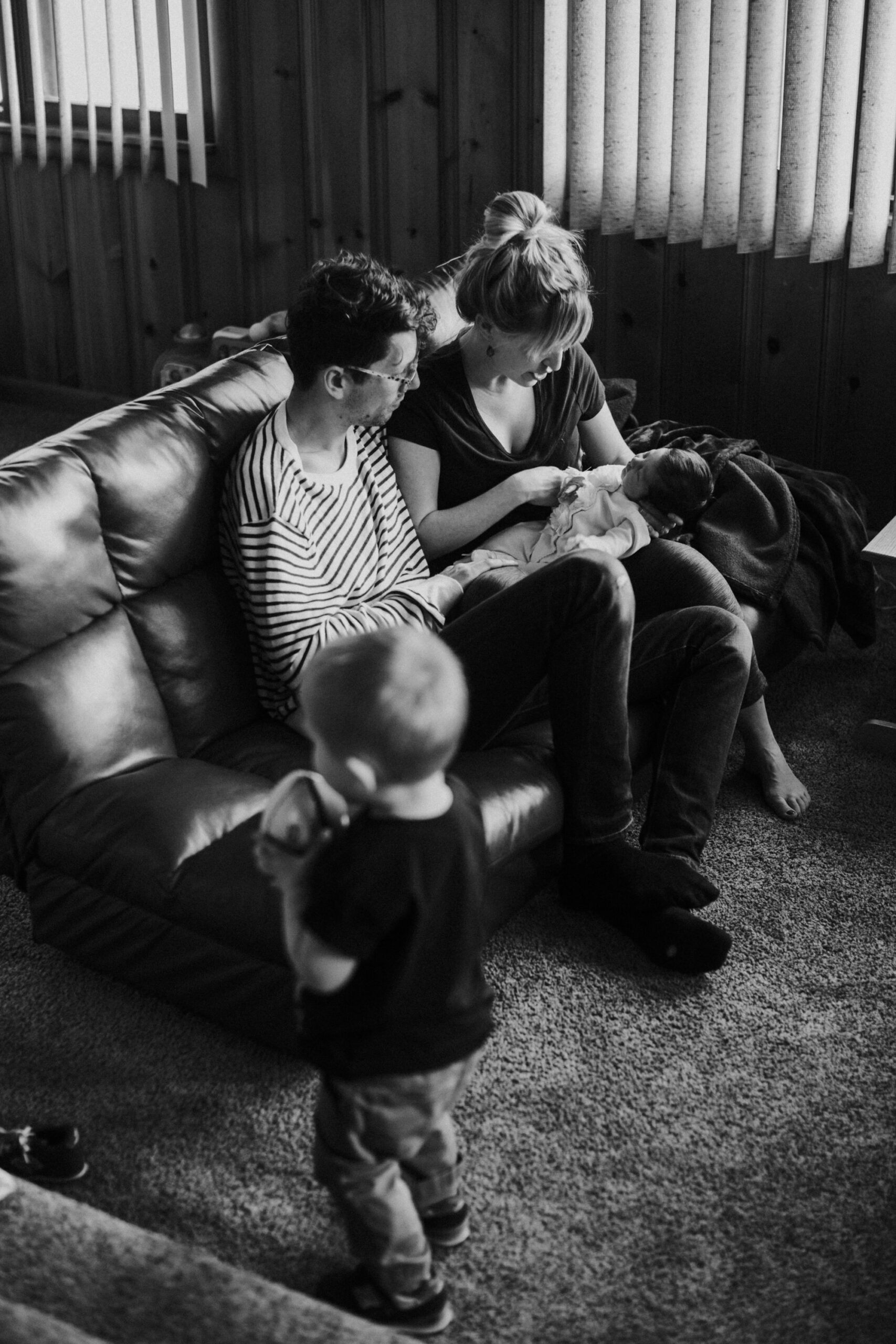No handbook truly prepares a parent for the arrival of a child, nor for the twists and emotional surges that come with raising one. The word “challenging” sometimes feels like an understatement. Many parents wonder—How to ensure the child’s emotional stability when partnership dynamics shift, or when disagreements cloud judgement? How to balance affection, routines, and shared responsibilities, especially with distance or changing family forms? These questions often echo late at night when fatigue bites hardest, or when yet another school holiday prompts logistical gymnastics. The reality is: each family is unique, but certain threads—openness, mutual support, scientific understanding—can weave remarkable resilience. From the essential foundation of co parenting to practical tools, here is a comprehensive exploration of what keeps families grounded through change.
Co-parenting and Your Child’s Well-being
Co parenting is not simply splitting chores or alternating pick-up duties—it’s an ongoing partnership where all caregivers commit to putting the child first, regardless of the adult relationship. Medical research consistently links strong co parenting to improved emotional security, reduction in anxiety and behavioural disorders, and better academic engagement. Why? Because reliable routines, coordinated approaches, and consistent boundaries provide a child’s developing nervous system with the predictability it craves to thrive. Imagine a child learning that, whether today is a routine weekday or a festivity, their caregivers will coordinate, align, and consult on what truly matters: their health, safety, and growth.
Couples and the Leap into Parenthood
Parents rarely foresee how a baby will reshape the daily landscape—sleep rhythms, intimacy, even simple communication can feel abruptly foreign. Before birth, unspoken expectations dwell just under the surface. Sometimes, the arrival of a child throws those silent contracts into the open: Who changes diapers at night? Whose career bends to accommodate childcare? Often, if harmony and open dialogue are maintained, families adjust. But unresolved tension can stack up swiftly, threatening both parental partnership and child stability.
What defines a couple, truly? Here, a simple equation: 1 plus 1 equals not only the sum, but a third entity—the relationship itself. When a baby is born, the relationship must shift to shield and nurture this new life, yet not disappear entirely. Preserving “couple time” amidst midnight feeds and medical appointments isn’t luxury; it’s essential for long-term family health.
What is Co-parenting and How Does it Work?
Co parenting is a dynamic, science-backed approach built on careful communication, coordination, and everyday adaptability. From the paediatrician’s perspective, the pillars include:
- Clear, respectful dialogue—sharing information about the child’s health, schooling, moods.
- Endorsing each other’s caregiving authority, even when opinions clash—because mutual respect calms conflict, which children acutely sense.
- Flexibility: as children grow, so must routines, plans, and expectations.
Co-parenting Versus Joint Custody—A Distinction
Many assume joint custody and co parenting are synonymous, but the distinction matters. Joint custody describes a legal arrangement—a court’s decision on residence, time, and parental rights. Co parenting, however, is an active process of partnership in all decisions: from vaccinations and education to screen time. A court order cannot force communication, nor cooperation—these spring from shared goals and willingness.
Types of Co-parenting Arrangements
Not all co parenting resembles picture-perfect teamwork. Medical and psychological literature distinguishes three common patterns:
- Cooperative co-parenting: Frequent, civil discussion; transparent decision-making; stability for the child, evidenced by steady sleep, appetite, and school adjustment.
- Parallel co-parenting: Minimal communication, each parent handling the child in their own domain—functional if direct communication proves too fraught, but it sometimes breeds confusion over rules or discipline.
- Conflicted co-parenting: High tension, persistent disputes, and a proven risk factor for childhood anxiety, aggression, even regression (bedwetting, tantrums).
Aim for cooperation when possible; but remember, parallel structures can offer safety if conflict remains unresolved.
How Co-parenting Has Evolved
Decades ago, co parenting typically described biological parents living together. Now, the spectrum includes stepfamilies, same-sex parents, grandparents, and even non-romantic adults united by commitment to a child. The explosion of research in developmental medicine shows these diverse structures can all promote secure attachment—if adults coordinate, consult, and support. Legal reforms increasingly reflect this by encouraging shared care, not just “custody”. Medical authorities stress: it’s not a parent’s marital status, but the stability and cooperation in the caregiving network that counts most for a child’s brain and heart.
Nurturing the Couple Connection
With sleepless nights and the relentless demands of early parenthood, maintaining the core couple bond may appear low on the priority list. Yet studies correlating family dynamics with paediatric health outcomes underline the importance of regular emotional check-ins. Small gestures matter—a shared cup of tea, twenty minutes talking, even a short walk together when extended family can babysit. Fatigue compounds misunderstandings; anticipate this. Discuss sleep needs and strategies ahead of time, considering support where possible (family, friends, professional caregivers).
Protect moments of intimacy—not only physical, but emotional. Even a quick evening ritual without screens, or a signal for “I need a break”, helps protect the partnership and, by extension, the atmosphere your child breathes each day.
Communication: The Lifeline of Co-parenting
It begins with the basics—update each other on fevers, homework, birthdays. Schedule discussions about big decisions (vaccinations, discipline) and clarify who handles which domains. If conflict builds, paediatric psychologists recommend “I” statements (“I feel worried about bedtime routines”) and frameworks like the BIFF method to keep language purposeful and kind.
Structured tools can help: co parenting applications (shared calendars, expense trackers), and written records are proven to limit misunderstanding. Reserve urgent phone calls for true emergencies, and save face-to-face dialogue for significant issues, preferably on neutral ground.
Key Benefits of Co-parenting
Children are sensitive barometers of adult tension. Numerous paediatric studies reveal that structured, co parenting agreements shield developing brains from the harmful effects of chronic conflict—improving sleep, boosting self-esteem, and encouraging robust social development. Children see and absorb how their parents handle disagreement, shape routines, and display respect or empathy. When parents affirm each other’s roles and share load, burnout and isolation shrink dramatically.
Family dynamics also ripple outward: schools and communities respond to harmonious, communicative families with more support, while children model what they see, gaining valuable conflict resolution skills.
Principles for Effective Co-parenting
- Communication: Essential not just in emergencies, but regularly—keep each other updated, even if routines seem mundane.
- Consistency: Align on the big things—bedtimes, meal routines, screen time. Disagreement confuses and unsettles.
- Flexibility: Children and circumstances change; openness to new schedules or shared holidays is key.
- Mutual Respect: Even if old hurts persist, keep the conversation focused on the child’s wellbeing. Boundaries matter—do not “vent” or discuss adult conflicts during co parenting times.
Typical Challenges in Co-parenting
Nearly all families encounter obstacles—miscommunication, emotional baggage, or practical confusion over values. A divergence in parenting style might spark debates on discipline, nutrition, or daily schedules. Introducing new partners or integrating blended families typically requires patience, clarity, and calm conversation with your child as central focus.
Legal or financial worries are common; here, documentation, professional mediation, and transparent expense tracking are recommended by paediatric and legal experts. If the miles between homes grow, or a child requires specialised care, adaptability is non-negotiable: frequent check-ins, updated care plans, and, for long-distance, regular video calls soften the gaps.
Building Your Co-parenting Plan
Paediatricians, psychologists, and family court professionals alike advocate a written plan—think of it as a living document, not a fixed edict. Clearly outline:
- Who handles school pick-ups, which parent schedules medical visits, how holidays are split.
- Who decides on doctor appointments, therapy, or special dietary needs.
- How financial contributions and unexpected expenses are shared.
Review regularly—children’s needs and circumstances will shift.
Communication and Conflict Resolution
When communication falters, back up to a less emotional channel: use co parenting software or email where tone can be checked and records kept. For persistent or worsening disputes, the involvement of an impartial mediator or therapist is strongly associated with better outcomes. And never argue in front of the child—observational studies document spikes in child anxiety as soon as voices raise or body language sours.
Navigating Difficult Situations
Sometimes, despite best intentions, one parent remains hostile or communication fully breaks down. Shield the child from the fallout—no using them as a messenger, and never negative talk about the other parent. Routines and regular touchpoints (meals, rituals, video calls with a distant parent) form a protective shell.
When physical distance, international moves, or complex health needs enter the scene, adaptive problem-solving becomes even more vital. For special-needs children, maintain extra detailed logs, share every health update, and schedule periodic review with healthcare teams to ensure uniform care.
When should a professional step in? If disagreements threaten the child’s physical safety, consistent routines, or access to necessary healthcare, paediatric and mental health experts recommend legal or therapeutic intervention.
Empowering Children Through Co-parenting
Children benefit when transitions are prepared and predictable: packing favourite objects, explaining schedules in advance, holding onto bedtime stories even when locations swap. Maintain a positive narrative about both homes, and attentive listening when a child signals stress or worry. Watch for subtle shifts—withdrawal, changes in appetite, regression—and consult paediatric professionals if needed.
Whenever possible, give children a say in modest decisions: which clothes to keep at each house, or what meals for special evenings. Research demonstrates even small choices boost feelings of security during uncertain times.
Long-term Growth and Adaptation
Big life changes—remarriages, moves, welcoming siblings—test the strongest co parenting structures. Advance, honest conversation preserves continuity, and regular review ensures the child’s evolving needs stay in the foreground.
Teenage years, famously turbulent, require alignment on boundaries, but also a collaborative loosening as independence grows. Keep key discussions open, respect privacy, and always return to the principle: what supports the child’s health, learning, and emotional growth?
And when birthdays or milestones approach, plan as a team—sometimes alternating, sometimes combining efforts. Shared joy, balanced with flexibility, deepens family resilience.
Key Takeaways
- Co parenting provides emotional safety, steady routines, and optimised development for children.
- Communication, adaptability, and mutual respect form the foundation of resilient parental partnerships.
- Well-defined, documented co parenting plans set expectations and reduce future friction.
- Proactive support—whether through professionals, technology, or extended family—amplifies positive impact.
- Prioritising child-focused decision-making and regular reviews ensures evolving needs are always met.
- Professional resources, community groups, and digital tools are ever-growing. For tailored support and free child health questionnaires, download the Heloa app.
Questions Parents Ask
How to make co-parenting effective when parents have very different styles?
Differences in parenting style are natural and even healthy, provided both communicate with respect and a focus on the child’s security. Instead of aiming for identical approaches, find common ground on core routines—such as bedtime, discipline boundaries, and nutrition—so that the child feels steady and protected. Focus discussions on your child’s wellness rather than personal philosophies. Compromise over less critical issues, and where consensus is impossible, agree to preserve routines that matter most for stability.
What tools or resources can help make co-parenting smoother?
There’s a wide variety of support options now, including co parenting apps with secure messaging, shared calendars, or financial tracking—these help clarify communication and reduce friction. Some families use workshops or support groups to learn new strategies, while others prefer regular consulting with mediators or therapists when challenges mount. Whenever in doubt, seeking guidance from paediatricians or child psychologists can offer a perspective firmly rooted in the child’s best interests.
What if I feel overwhelmed or cannot seem to move forward with co-parenting?
Feeling overloaded is common. Juggling work, emotions, and logistics isn’t small feat. Acknowledge fatigue—without self-reproach—and pause if possible. Reaching out to a trusted friend, seeking counselling, or just taking a moment for yourself can help replenish your strength. Sharing responsibilities, whether through formal support networks or informal community, can renew perspective and make the journey forward lighter. Whenever uncertainty persists, consulting with health or childcare professionals can provide clarity.









